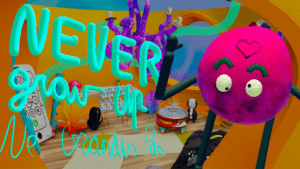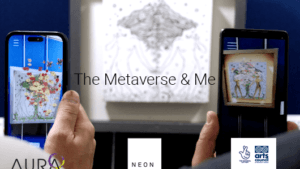
FIVARS 2023: Spotlight on the root is more important than the flower
 The root is more important than the flower is a 360º story of a filmmaker’s journey to learn more about her grandfather and her Indigenous roots. FIVARS had a chance to speak with director Cristina Kotz Cornejo.
The root is more important than the flower is a 360º story of a filmmaker’s journey to learn more about her grandfather and her Indigenous roots. FIVARS had a chance to speak with director Cristina Kotz Cornejo.
What led to the creation of this piece?
I grew up knowing my musician grandfather from Argentina, whom I had never met, was proud of his Indigenous Huarpe roots. I knew he was orphaned at ten and was a self-made musician who ended up in NYC and in 4 Paramount Pictures films with Tango icon Carlos Gardel. He was a source of pride in our family and had very Indigenous features that come through in me.
Seven years ago, I decided to learn more about his (our) roots. So I made contact with Huarpe leader Maria Zalazar in San Juan, Argentina. Repeated trips and invitations to visit her and the community resulted in a strong friendship. My respect for Maria and my strong and immediate connection to my ancestral homeland and people was undeniable. As someone who grew up not feeling connected to any place or belonging anywhere, I finally felt at home. I felt and feel a pull from my ancestors.
This 360º film came about when I realized the perfect way to express my feelings and connection to Maria and Huarpe territory (what is now San Juan) was by transporting an audience utilizing this immersive technology.
What was the production process for you and your team? What did you learn?
I was a team of one on the production side. I had a friend on the same journey as me who was also discovering her Indigenous roots in Argentina. She is a photographer who lives in Buenos Aires and documented the behind-the-scenes experience for the root is more important than the flower.
I learned so much about the benefits of this technology and how placing the spectator in the center of the action was unlike 2D filmmaking. I had to throw away all the traditional ideas of the importance of the “frame” and think differently about the impact this technology can have. The sound became key, as well as camera placement.
How did you become an immersive media content creator and why?
I am trained as a traditional filmmaker and had no experience with this technology before creating this film. I immersed (pun intended) myself in immersive media to learn how these experiences impact a participant or audience member. It was quite an exciting and eye-opening experience, and I was sold that I needed to learn 360 filmmaking and create this intimate project. I purchased an Insta360 Pro camera specifically for this project.
The filming was not only fun, abut it allowed everyone involved to learn together. The Huarpe kids had a blast with the Insta360 camera and astutely remarked on how the six lenses were “observing the world.”
What is the VR/AR industry like in your region?
I have one foot in the US and one in Argentina. I live in Boston, so the VR/AR industry here is constantly innovating with MIT down the street. In Argentina, I am working with their immersive media pioneer, Damián Turkieh, on another VR project, and he is THE VR genius in Latin America as far as I see. His company, Realidad360 is at the forefront of many projects in Latin America, and I’m fortunate to know him and call him a friend.
What do you have planned for the future?
As I said, I am working on a VR project, Magic in the Desert, with Damián, that received support from the Online News Association and Emerson College. We have created a sample work for it and hope to continue developing.
It’s the story of Indigenous leader Modesto Inakayal and how he was taken from his lands and held captive by his family and others in the Museum of La Plata in Buenos Aires in the 19th Century. It’s an immersive journey into his life, his people’s culture, and the importance of the Patagonian region to their lives, past and present.
What would you like to share with fellow content creators and/or the industry?
While learning about this technology, I find sometimes that the technology becomes the priority, and there needs to be a balance between the content or story and the technology. After all, we cannot lose our humanity to machines, so prioritizing stories and human experiences to me is imperative.
Do you think VR festivals like FIVARS are important?
Absolutely, exhibition is still complicated with this technology, so it is vital that festivals like FIVARS exist. They, festivals, play a key role in bridging the work and the audiences. Exhibiting this type of work is the hardest part of the technology itself.
The root is more important than the flower at FIVARS 2023 runs in person September 15-19th in Toronto and online through October 3rd.














